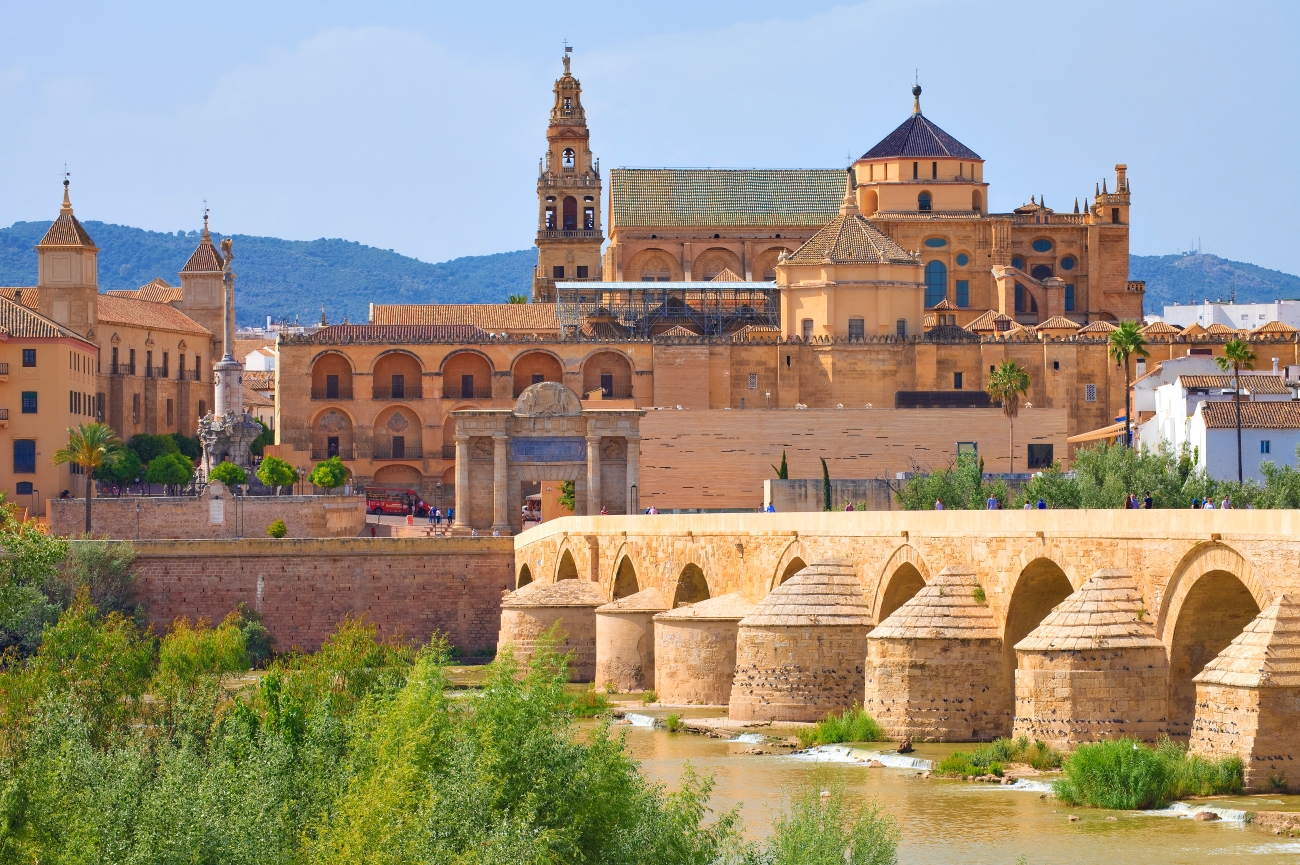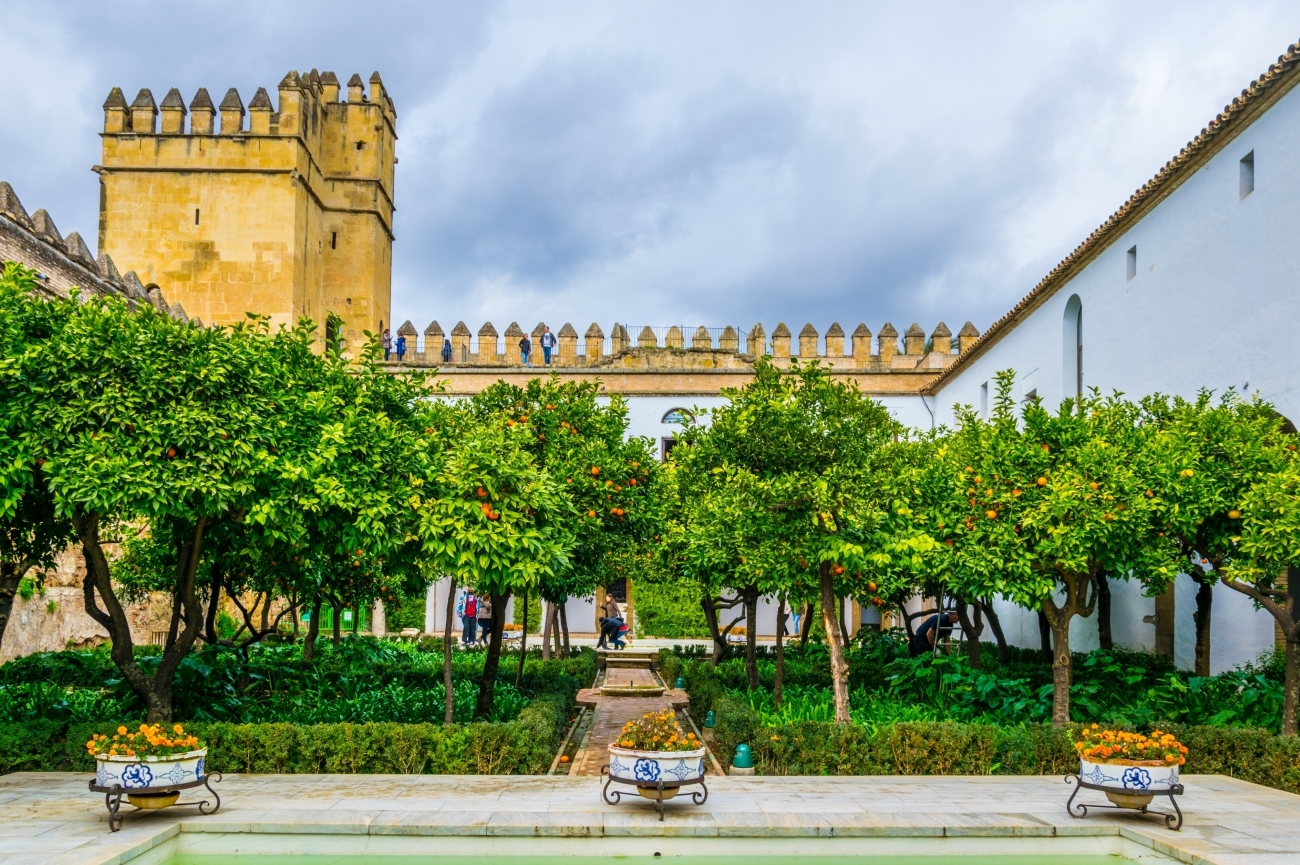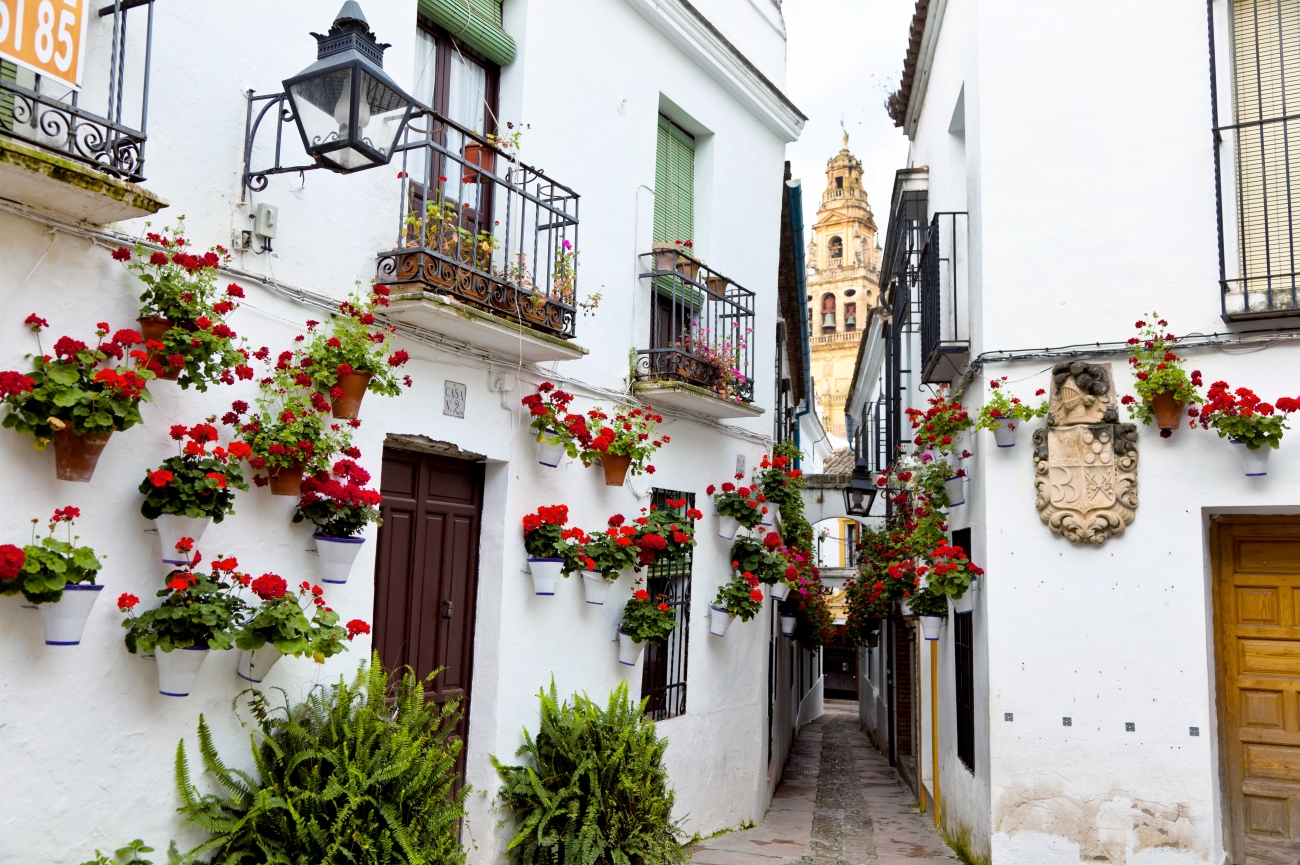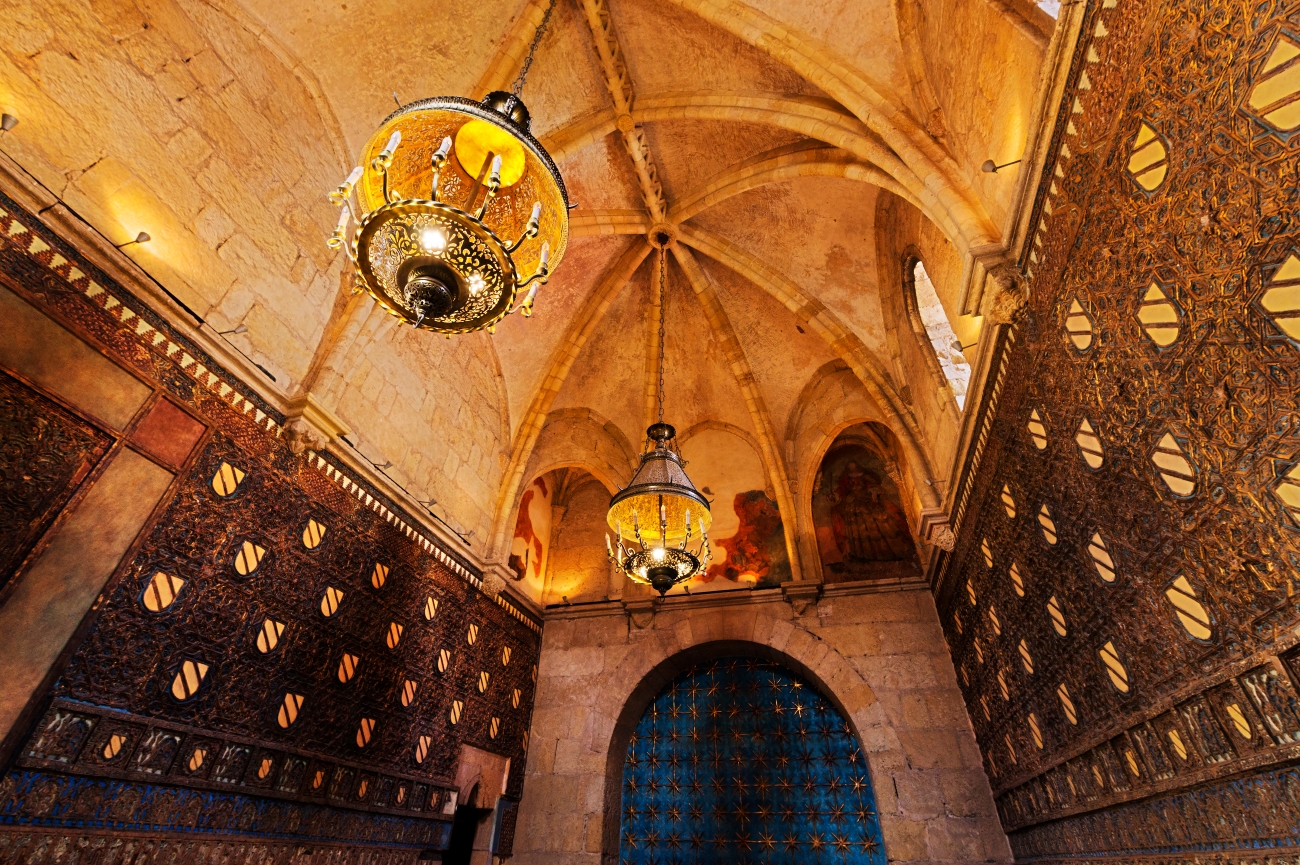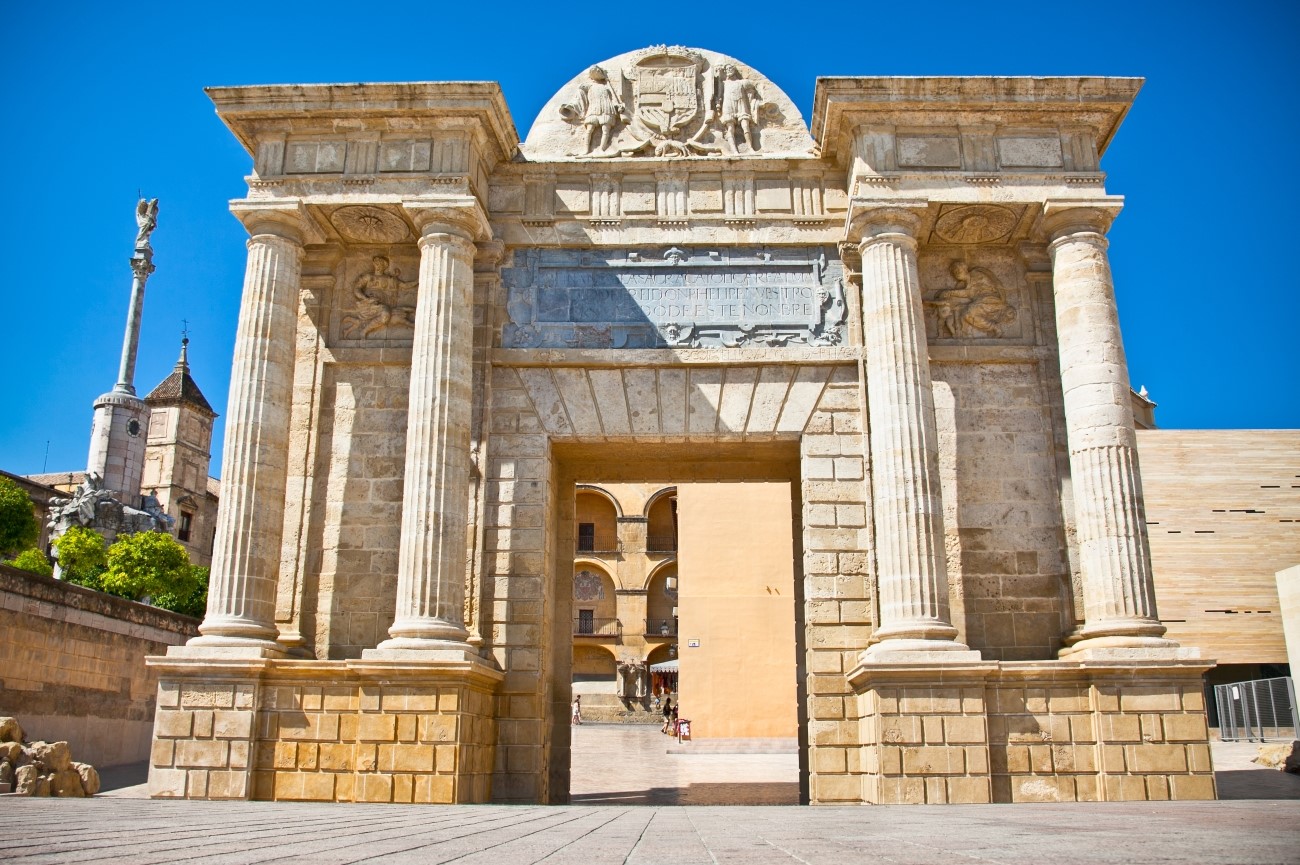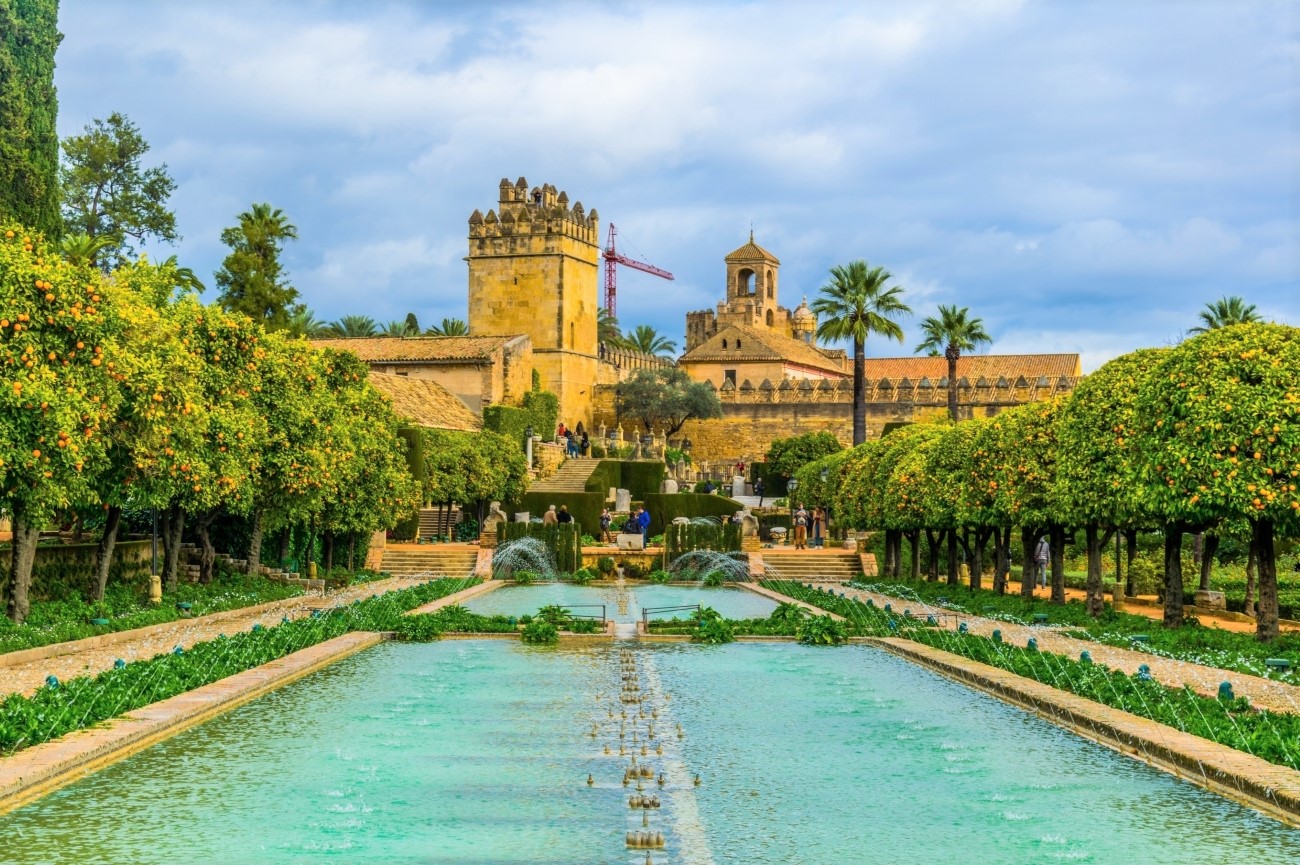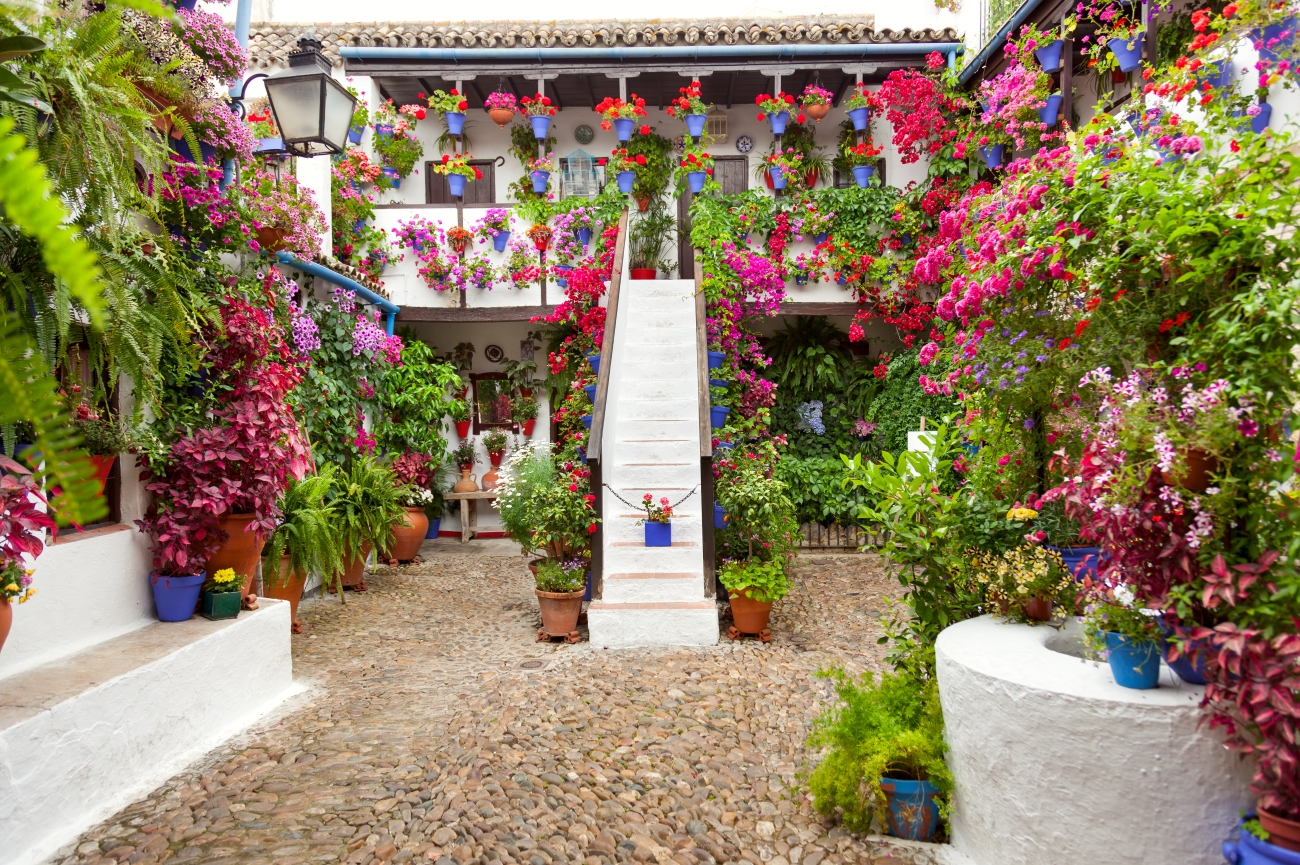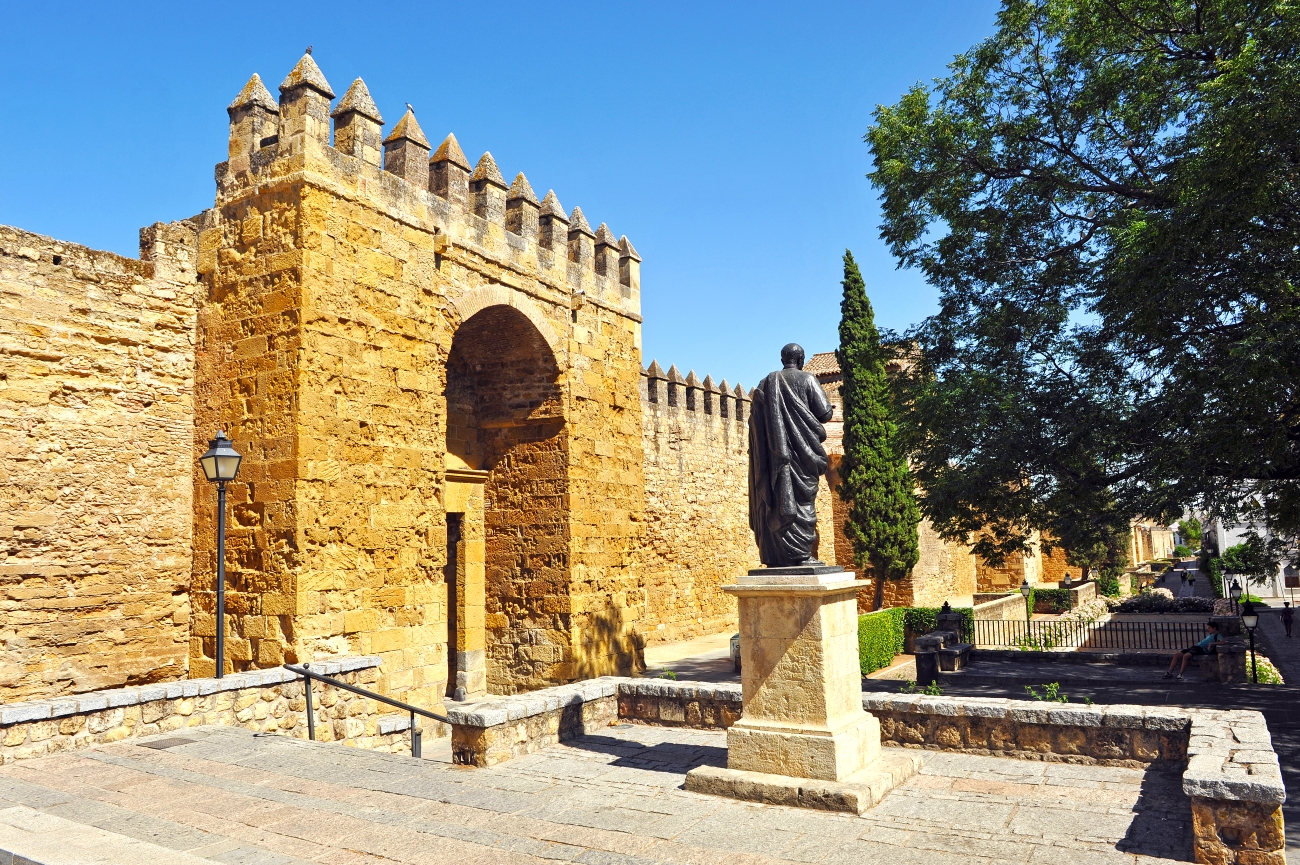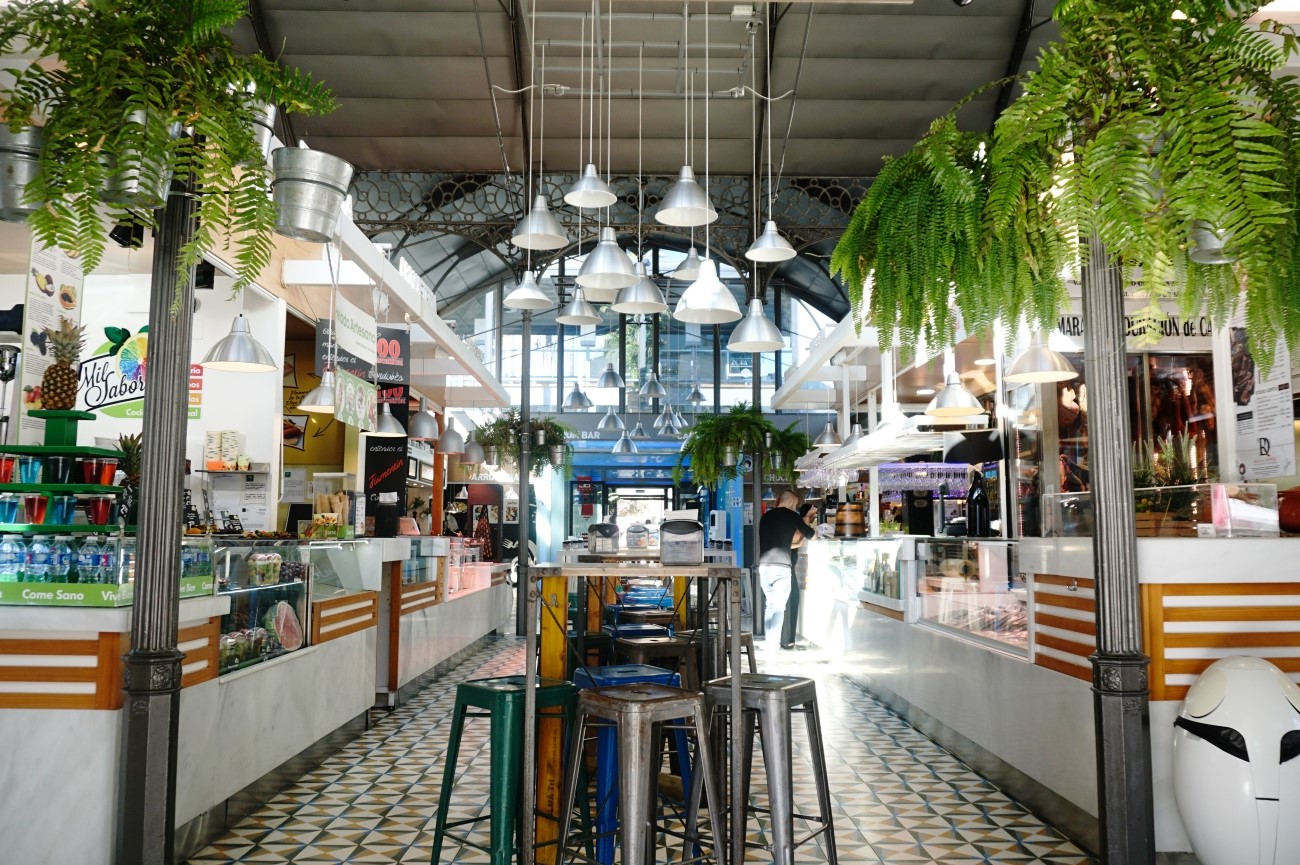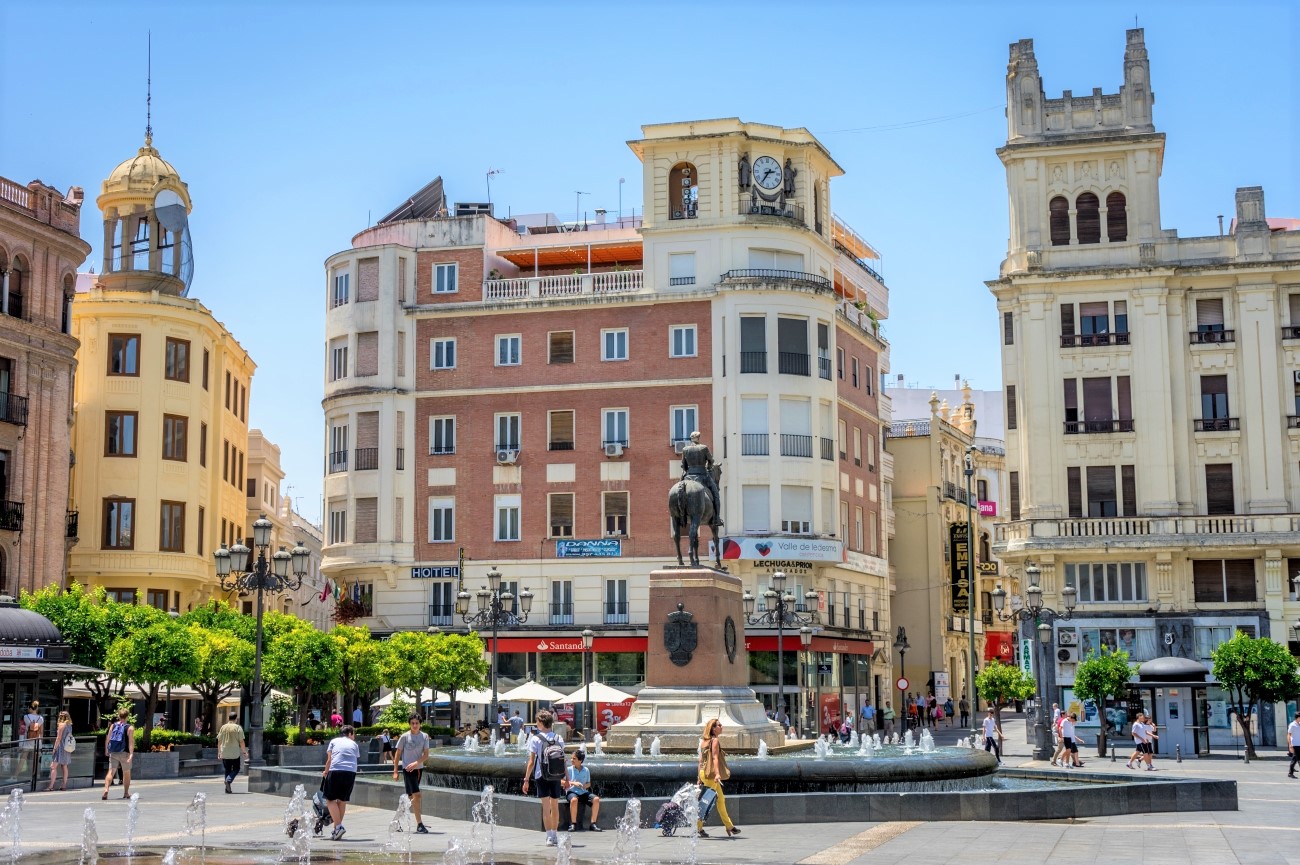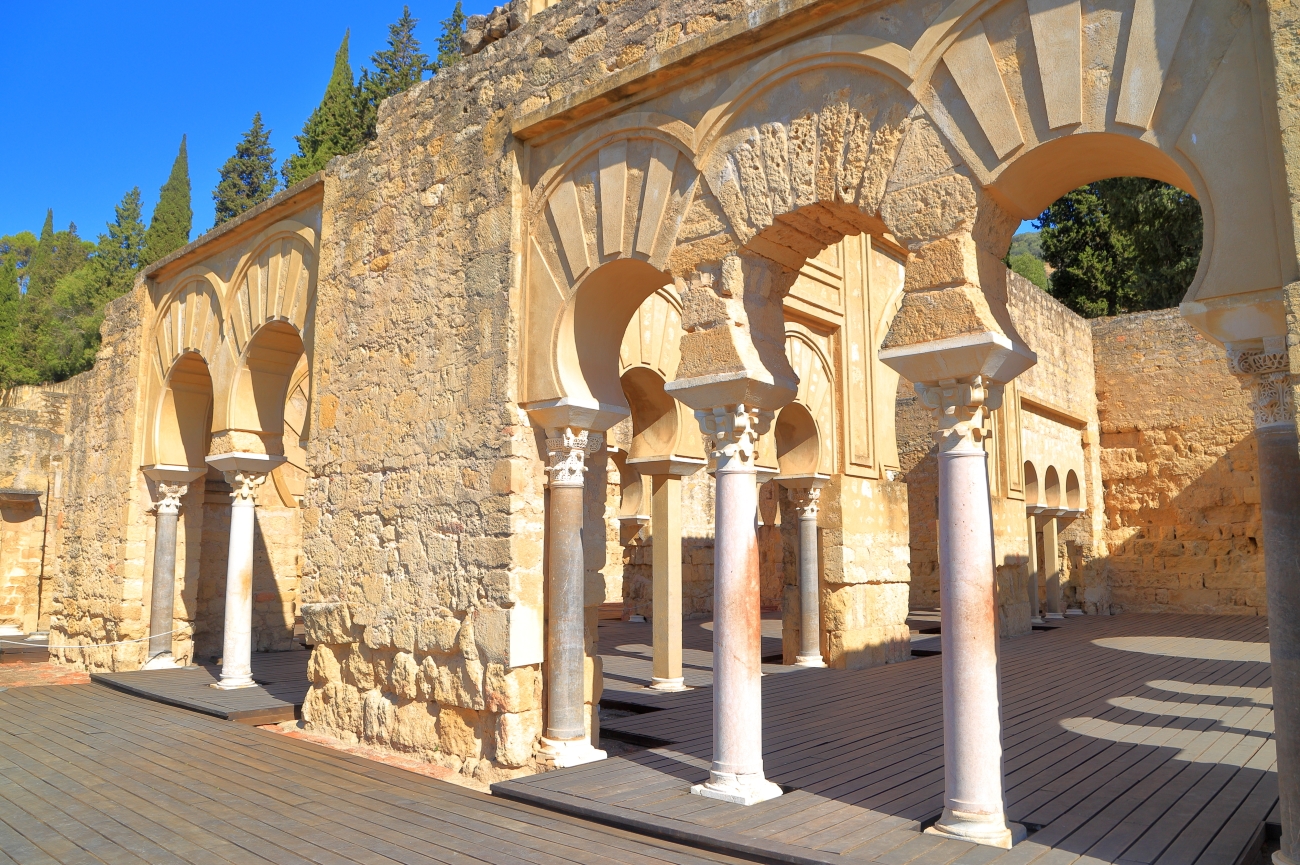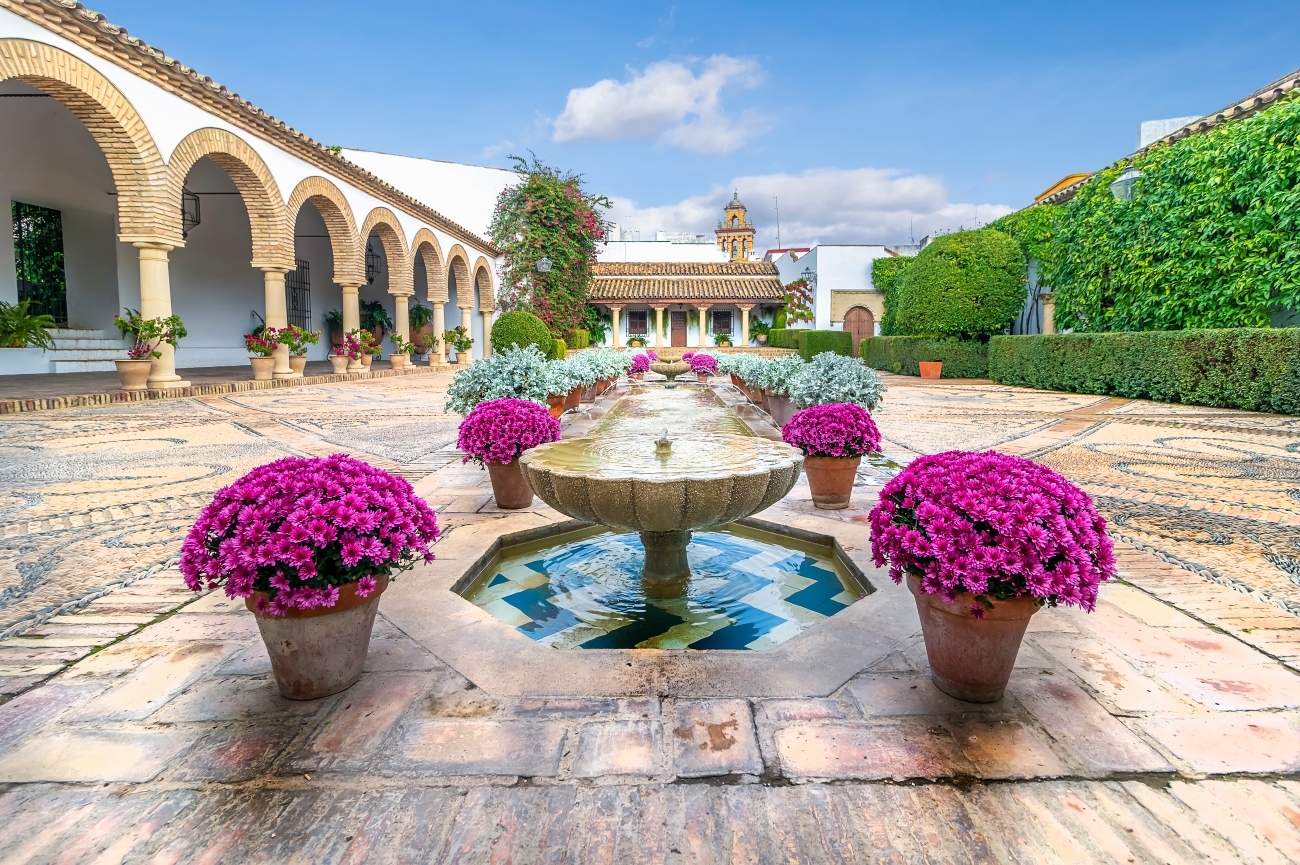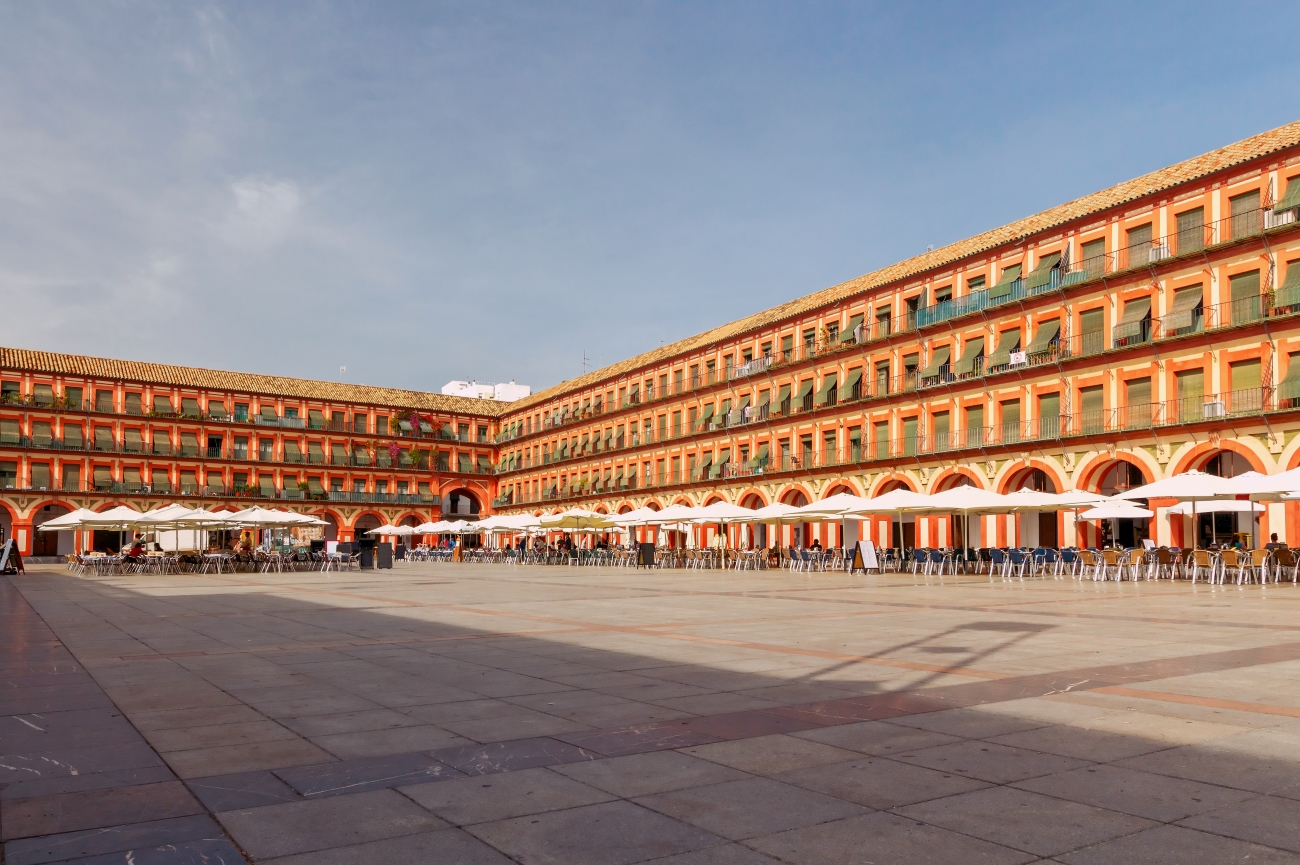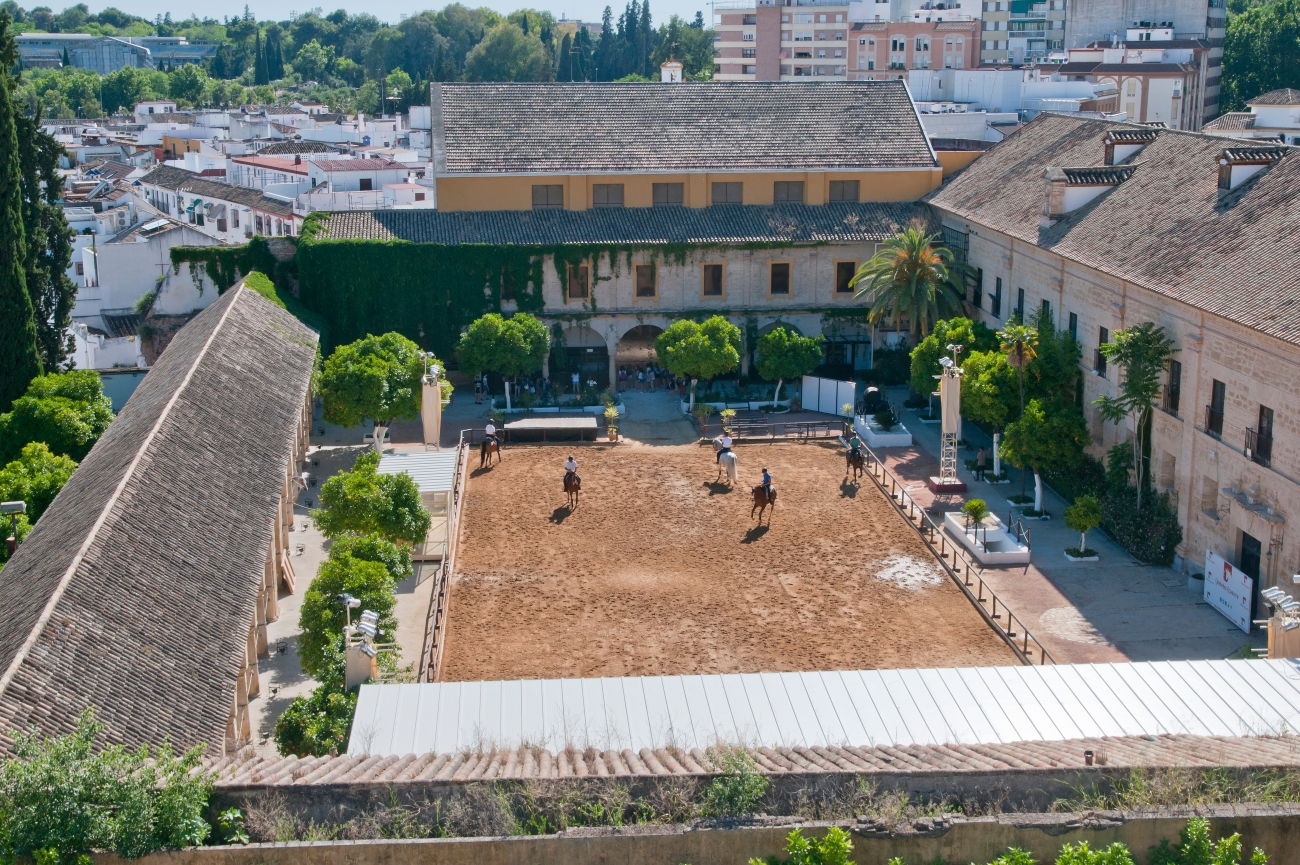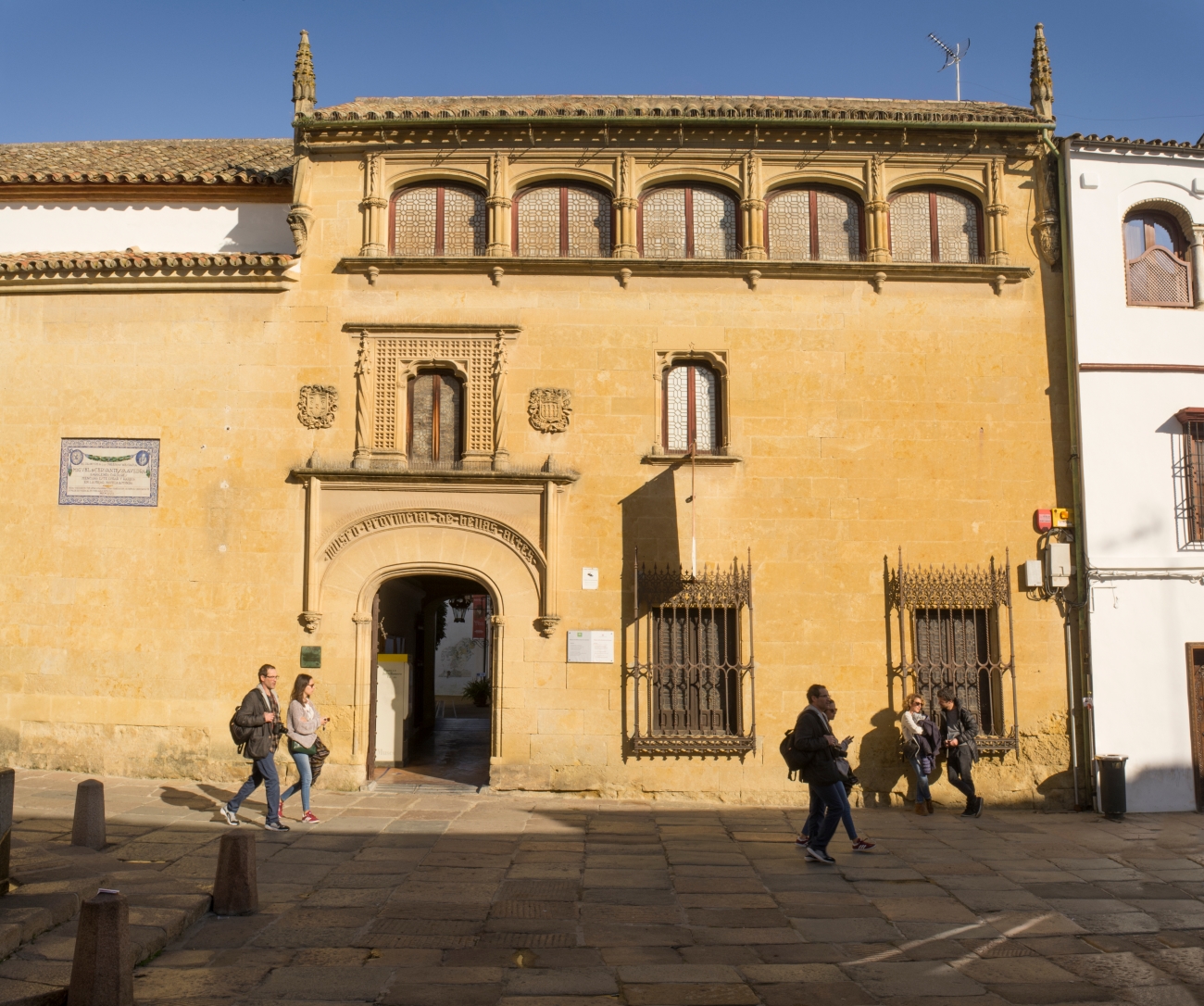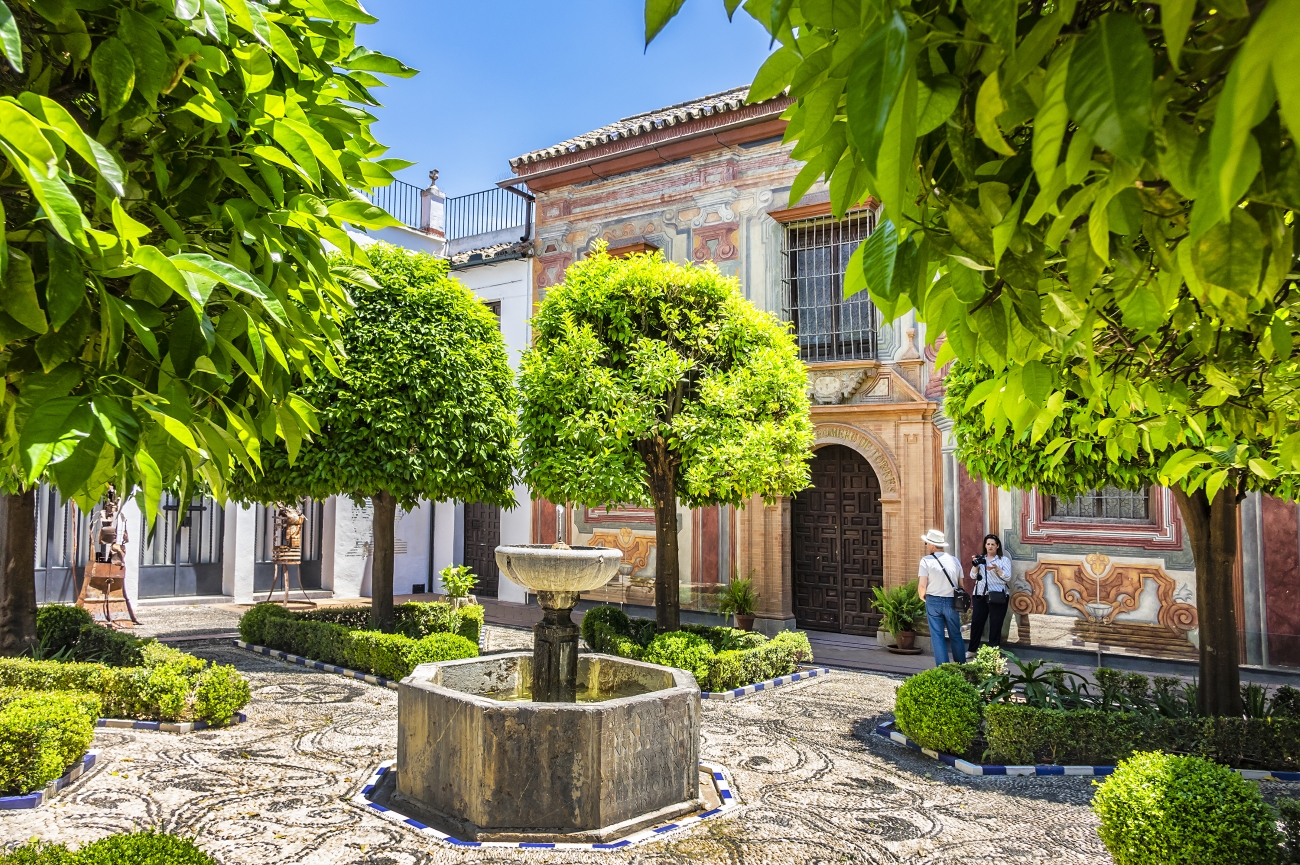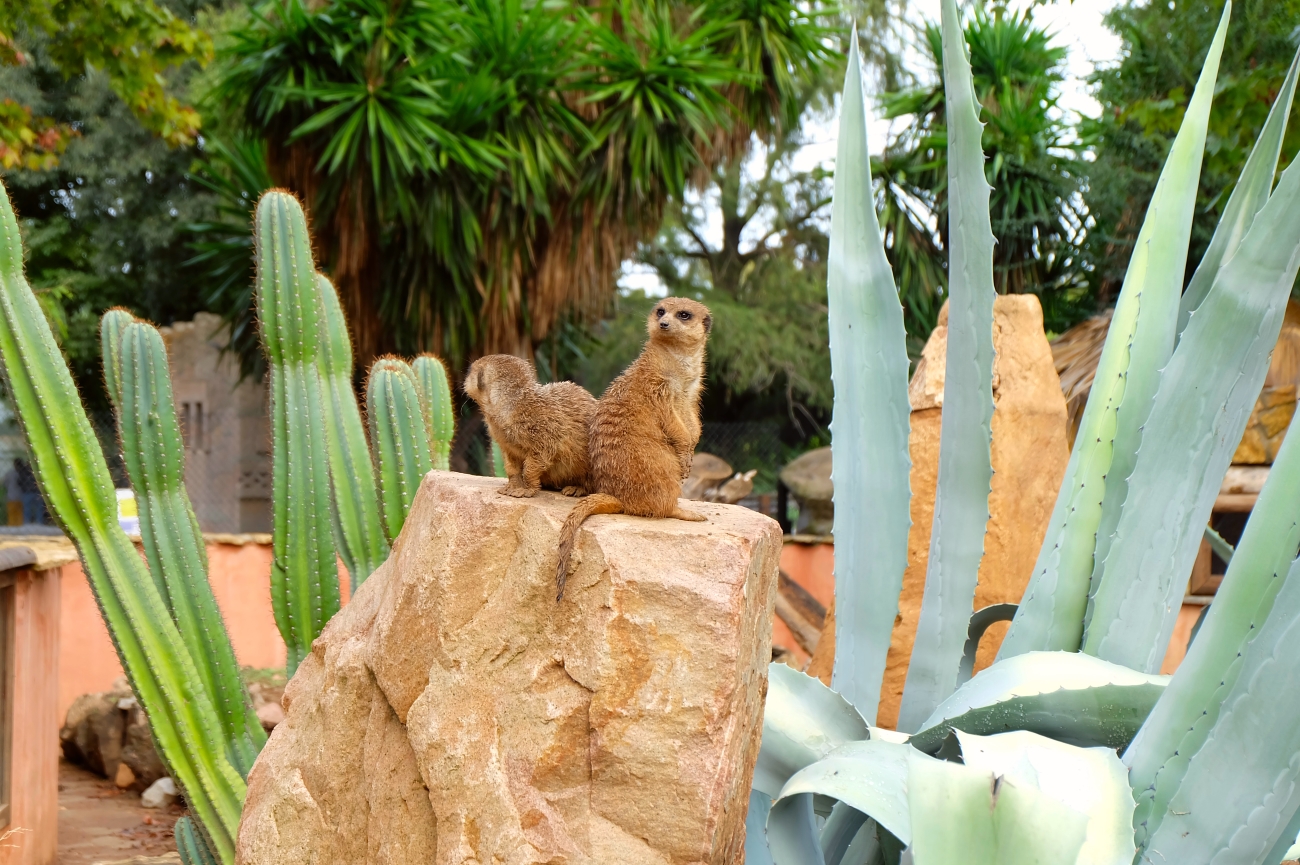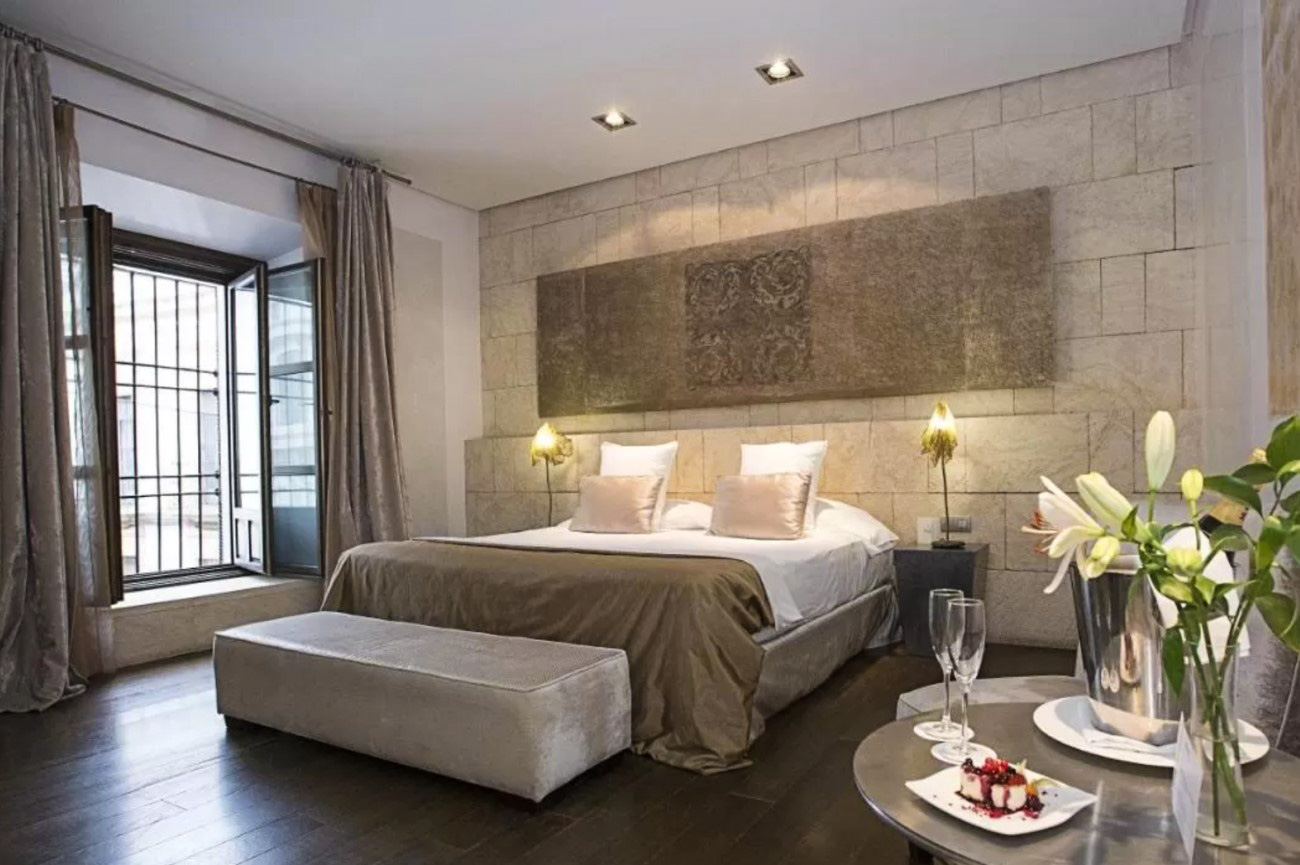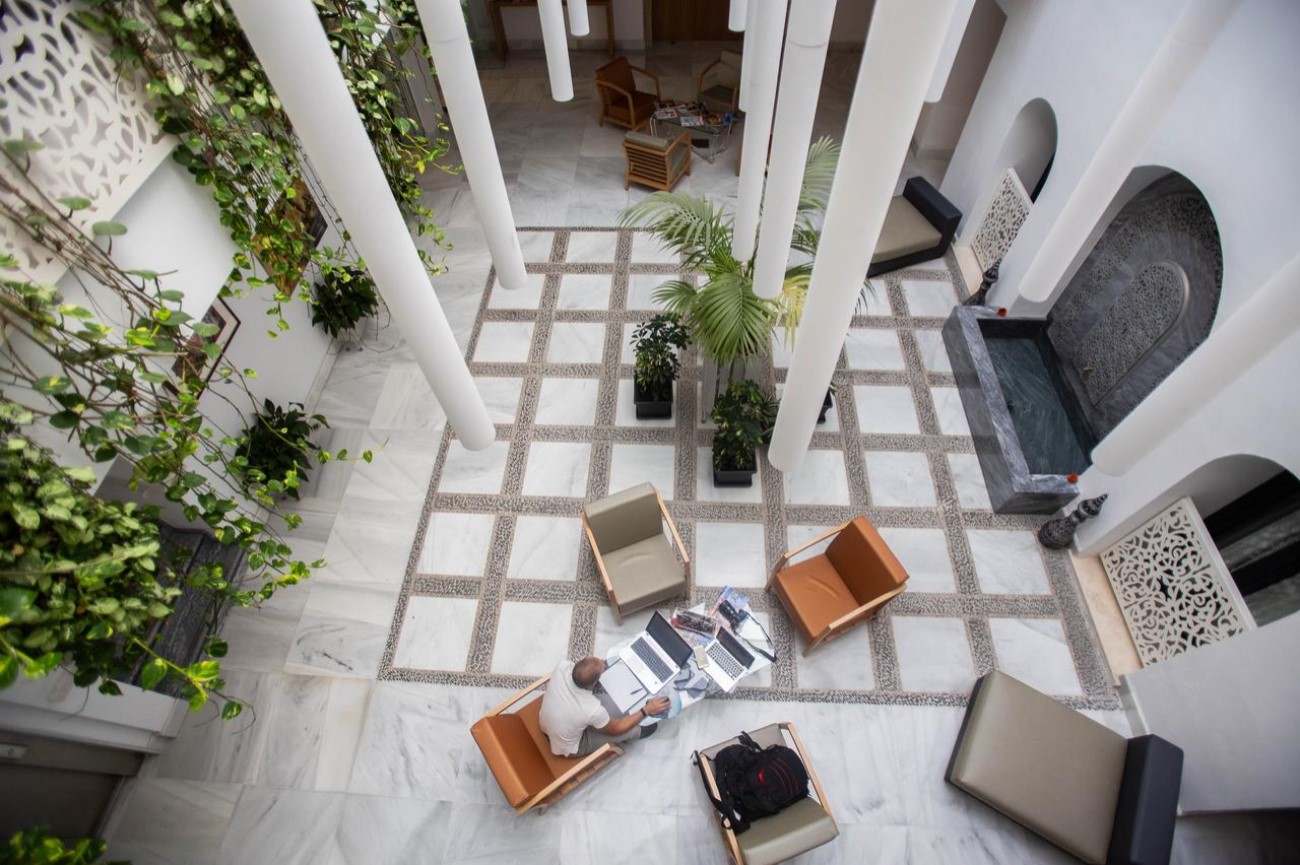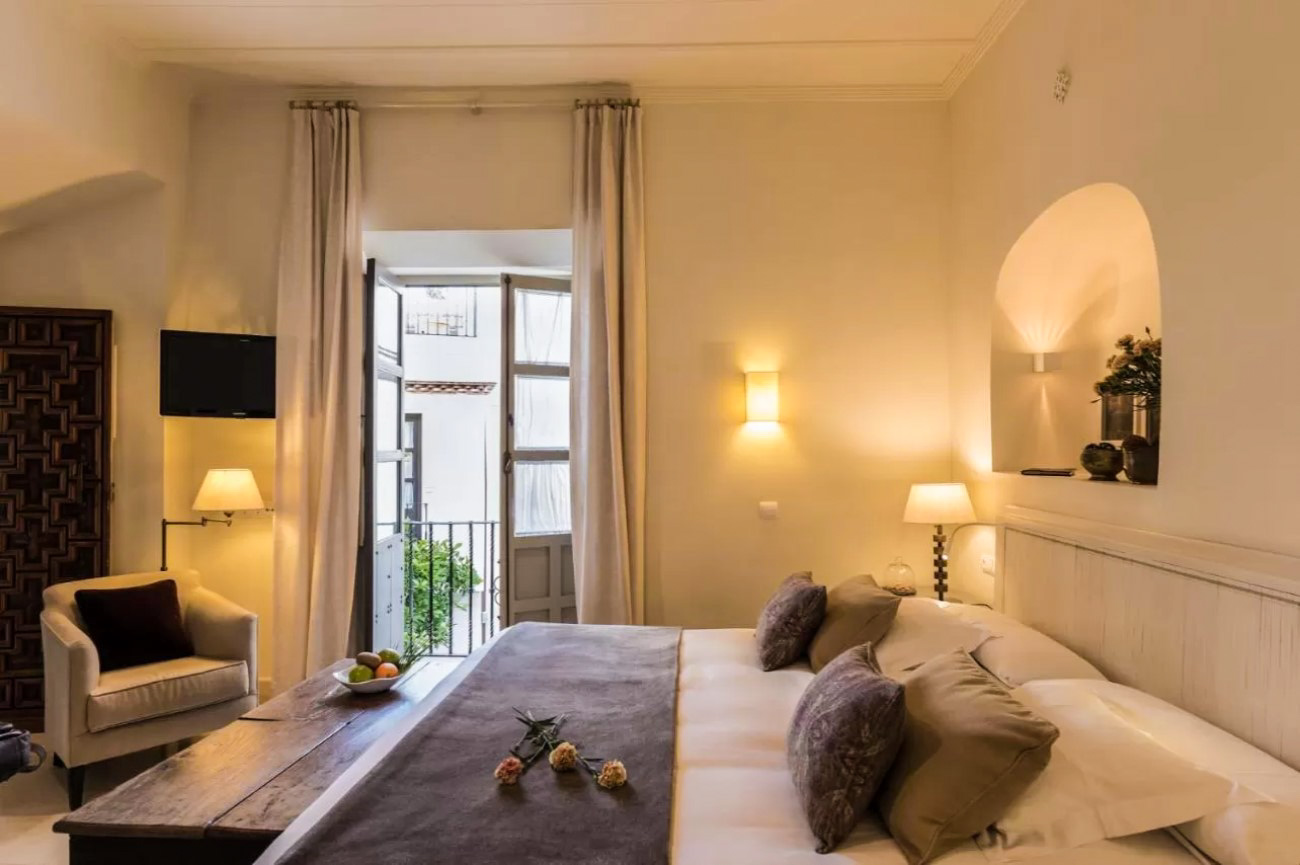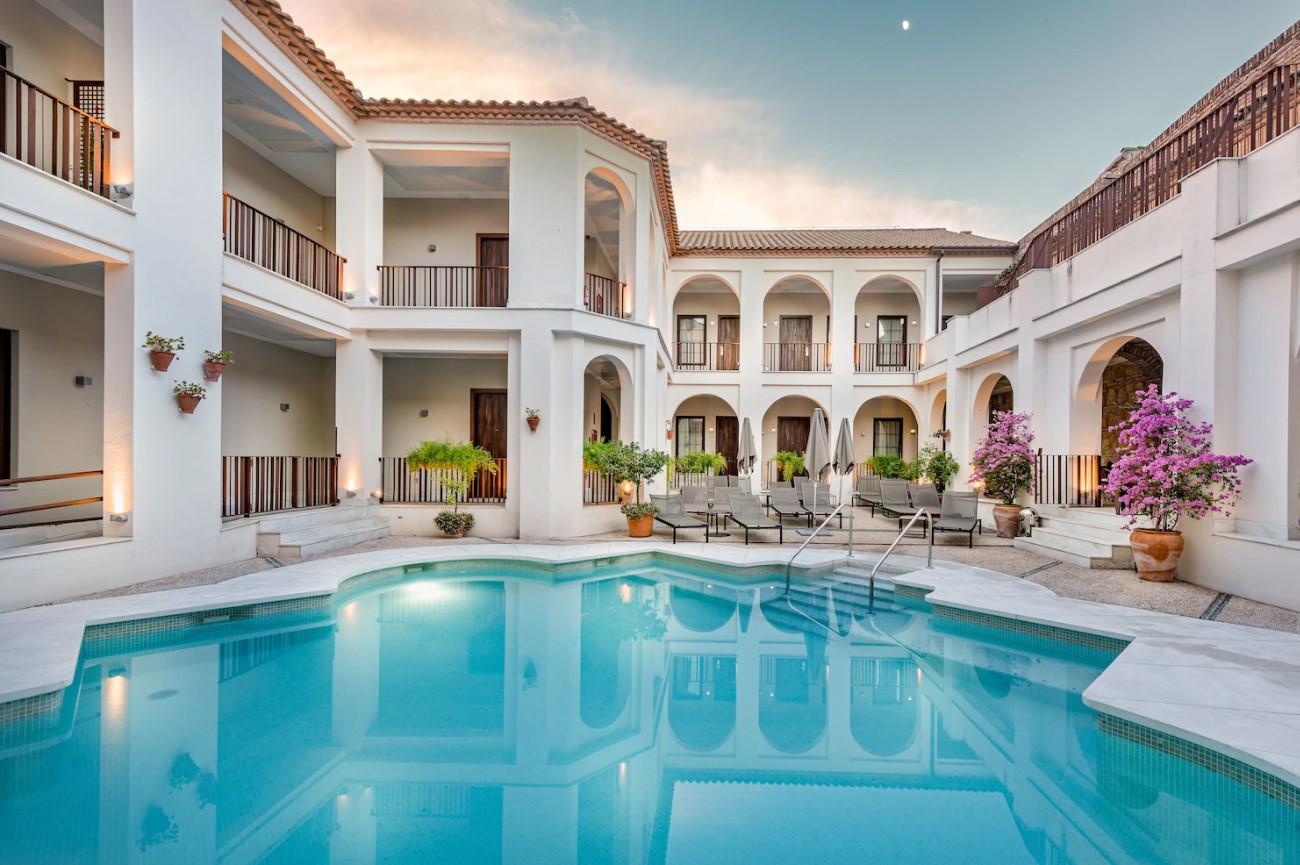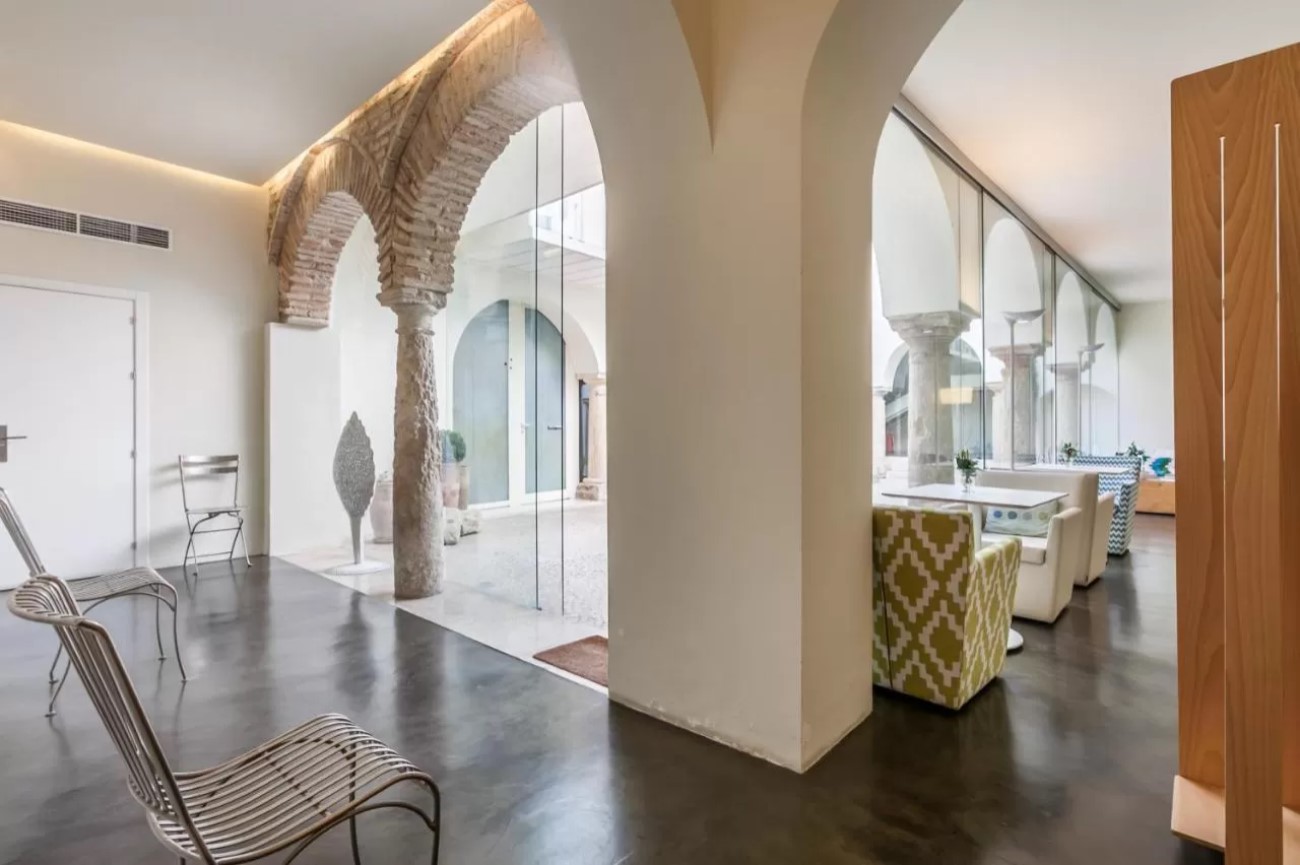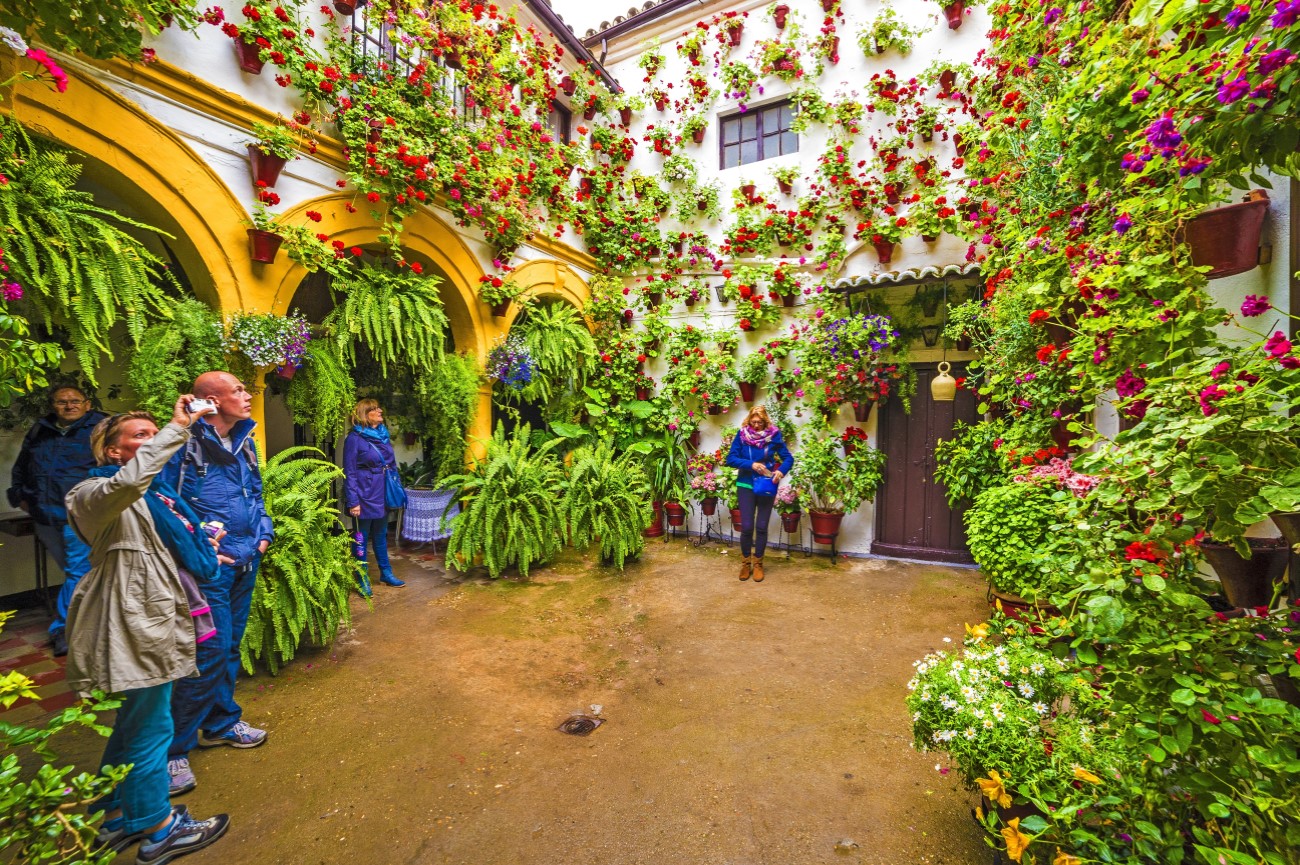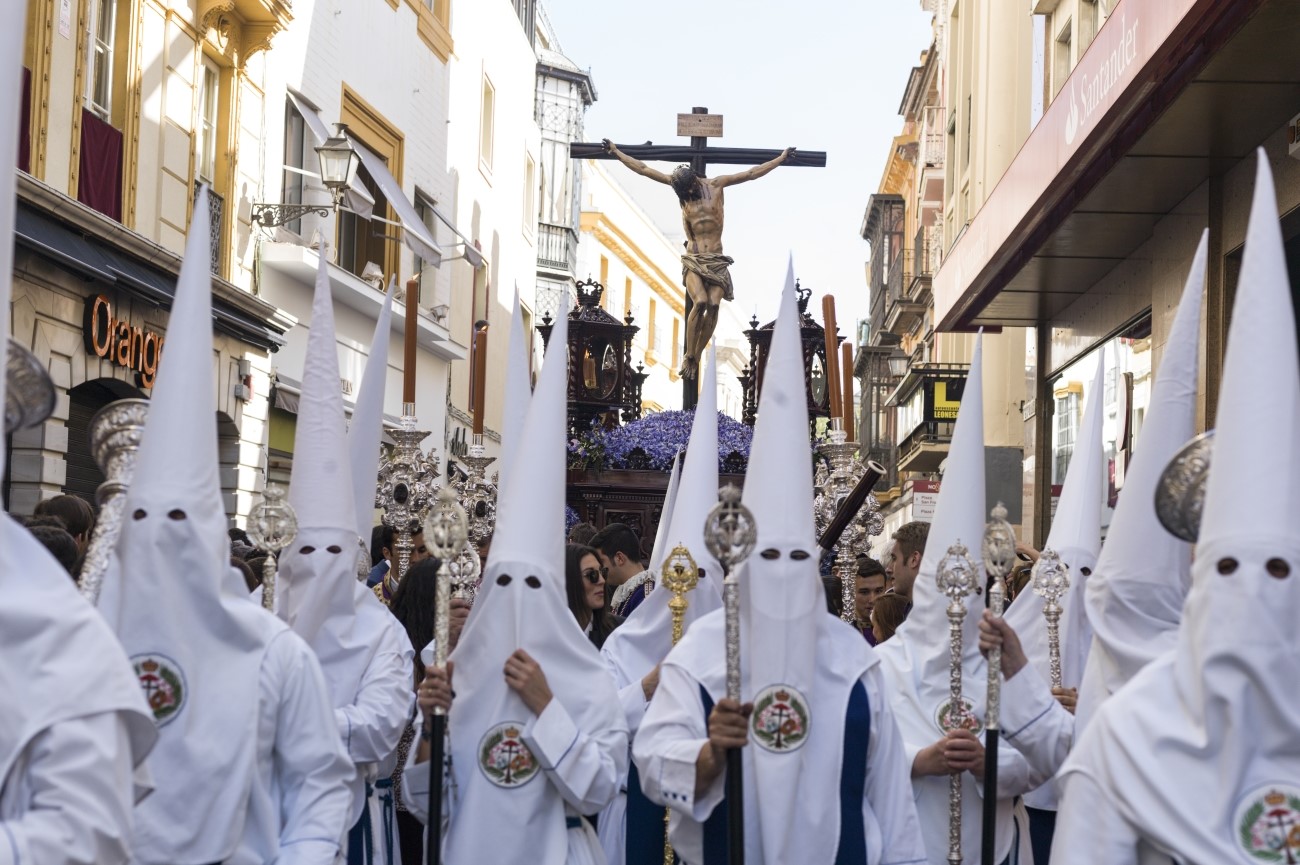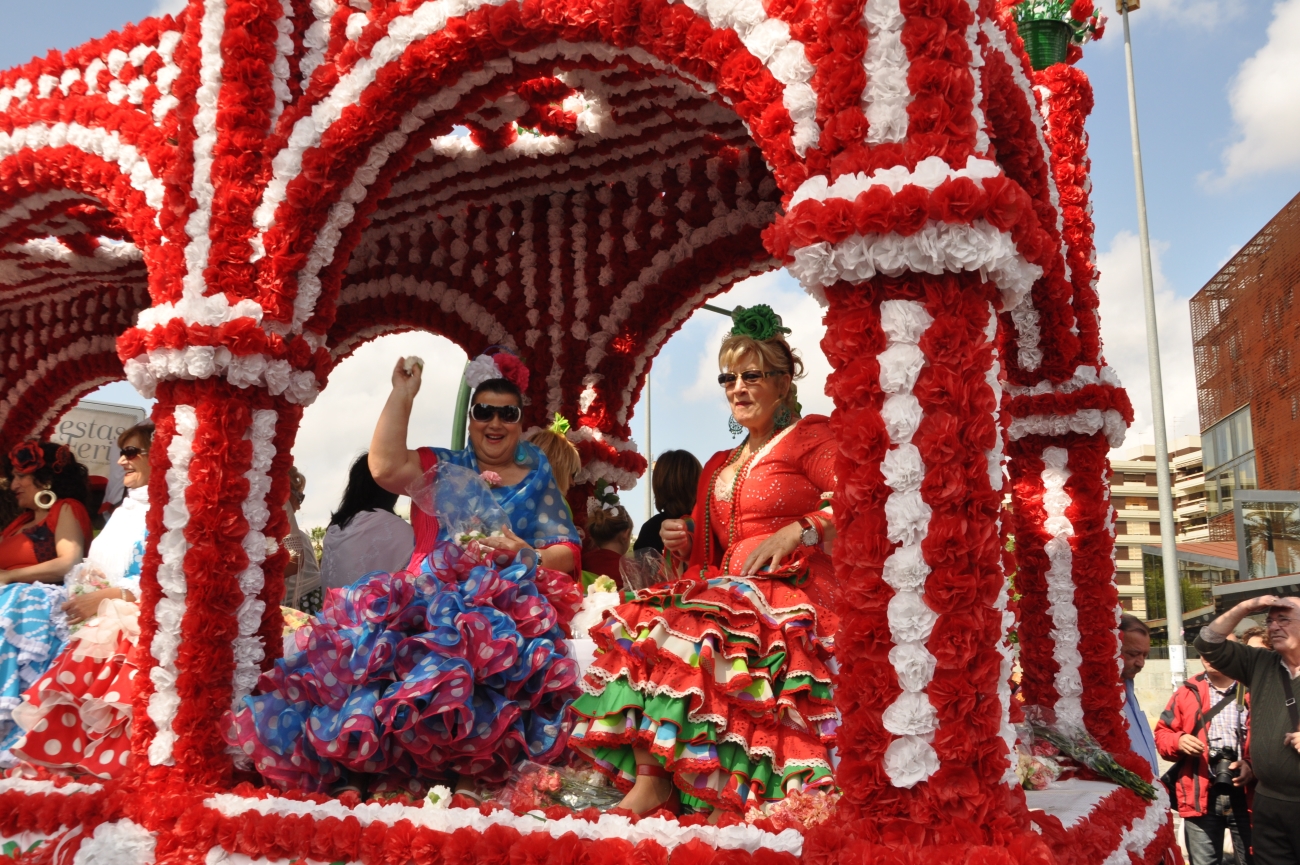Things to do in Cordoba, Spain
Córdoba began as a Roman settlement, and by the 10th century, it was the most important city in Europe. When the Muslims invaded the Iberian Peninsula at the time, they named the region Al-Andalus and made Córdoba its capital.
The city became the centre for cultural exchange between Muslims and Christians, giving rise to many scientific and artistic developments.
Memories of Córdoba's rich past are still visible today, from its colourful Roman patios filled with flowers to its monumental Mosque and Moorish palace. Adding to these landmarks, is La Judería, the city's old Jewish quarter.
If you’re looking for things to do in Córdoba, this two-day itinerary will help you make the most of your visit. It includes the city's best attractions, as well as tips on where to eat and where to stay.
Day 1

Morning: Córdoba Mosque
The first stop on our itinerary is the Mezquita-Catedral, also known as the Great Mosque. It's this monument that most people imagine when they think of Córdoba. Just like the city, the Mezquita also went through several changes. It started as a Mosque in the 8th century, but after the Christian conquest in the 13th century, it got converted into a cathedral. As a result, the building features a mix of Christian and Islamic elements. Today this UNESCO-World site is one of the most visited Spanish monuments.
Go in through the Puerta del Perdón, and follow the path towards the Patio de los Naranjos, a courtyard surrounded by fragrant orange trees. This is where Muslim worshippers used to perform their ablutions.
From the patio, walk towards the Puerta de las Palmas, the main entrance to the Mosque. Inside, you'll find the prayer hall with the infamous red and white striped arches.
After admiring the interior, head back out and make your way to the bell tower for a panoramic view of the city. Entrance to the tower costs an extra €2
Tip: If you don't mind waking up early, it's possible to access the Mezquita for free from Monday to Saturday between 8:30 a.m. and 9:30 a.m., except during extraordinary celebrations.
Calleja De Las Flores
From the Mosque, walk down to the Calleja de las Flores. This narrow street gets its name from the colourful flower pots that adorn its buildings. The picturesque setting has made it one of the most photographed streets in Córdoba. Standing in the middle, you can capture the cathedral tower surfacing amid the whitewashed houses.
La Judería
La Judería is Córdoba's old Jewish quarter. It's worth spending some time here exploring its maze of cobbled streets and hidden monuments. Keep an eye out for the Casa Andalusí, a museum with Moorish-style architecture and the statue of Maimonides, a prestigious Jewish scholar. Other highlights include the 14th-century synagogue, the chapel of San Bartolomé with its striking Mudejar-style architecture, and the Casa de Sefarad, a small museum that showcases the history of the Spanish jews.
Puerta Del Puente
Puerta del Puente was once one of the city's main gates. The structure you see today dates back to the 16th century, but there was already a gate here during Moorish and Roman times. You can walk under it on your way to the Roman bridge.
Roman Bridge And The Calahorra Tower
While it dates back to the 1st century BC, the Puente Romano got a makeover in the 10th century after the city's Moorish occupation. The bridge stands above the Guadalquivir river and includes 17 stone arches. It's the perfect spot to capture the whole town and the mountains rising in the background. At the end of the bridge, you'll find the Torre de la Calahorra. This fortified tower houses a museum that explores the religious and cultural facets that helped shape the Andalusian identity.
Cordoba Map of the morning tour, Day 1
Afternoon: Alcázar De Los Reyes Cristianos
In the afternoon, head over to the Alcázar de los Reyes Cristianos. This former royal palace was built upon the ruins of an old Moorish fort. Some of its original structure remained, but most of it was added later on when the Christian Monarchs took over Córdoba. Like most Andalusian buildings, the Alcázar features a series of halls and Arabian-style gardens with trees and decorative fountains. These courtyards are especially colourful during spring when the flowers are in bloom. Inside the palace is a collection of antiquities, including Roman mosaics discovered on this site. Visitors can also climb up to the towers which have splendid views over the town.
Patios De Córdoba
Beyond historical landmarks, Córdoba is famous for its picturesque patios. After visiting the Alcázar, take a tour of the Patios San Basilio. These are privately owned courtyards, but you can purchase a ticket to access them. The trail includes a series of houses with stunning floral displays arranged by locals through the years. Córdoba gets pretty hot during summer, and in the Roman era, patios like these were designed to help residents cool off.
Almodovar Gate
Continue walking until you reach the Almodovar Gate. In the Moorish era, this defensive structure was known as "Bab al-Chawz" or Puerta del Nogal, but its current structure dates back to the 14th century. Along with Puerta del Puente, the Almodovar Gate is one of the few remaining gateways to the city and marks the entrance to the city's Jewish quarter. Next to the gate is the Jardines de la Victoria, a large public garden lined with palm trees.
Mercado Victoria
Food markets are one of the best places to experience local cuisine. In Córdoba, you can visit the Mercado Victoria. The market occupies a 19th-century building right in the middle of the Victoria gardens. Open between 10 a.m. and midnight you can grab a meal here at any time. There are around 30 stalls inside, serving anything from Córdoba's classic salmorejo to sushi and empanadas. While you decide what to eat, grab a glass of Montilla-Moriles, a wine similar to sherry that is produced exclusively in Córdoba.
Plaza De Las Tendillas
Finally, take a walk around the Plaza de las Tendillas, the city's shopping district. Here you'll find a series of cafes and restaurants with outdoor terraces. The square is even more special at night, when the fountains lit up. On the way there, you can pick up a souvenir in shops like the Olive & Co, which sells beauty products made with local olive oil or the Faustino Prieto for delicious cured meats.
Cordoba Map of The Afternoon Tour for Day 1
Day 2

Morning: Medina Azahara
Start your second day in Córdoba with a visit to the Medina Azahara. Set on the outskirts of the city, this was once the centre of the Islamic Caliphate. Abd al-Rahman III ordered the construction of the medina in 936 and named it after his favourite wife Zahara. At the time, the complex stretched for more than 1500 metres. In 1010 it was looted and destroyed by the Almoravids. The remains you see today were only uncovered at the beginning of the 20th century, and although it's only a fraction of what it used to be there, they still give you a sense of the medina's former glory. If you don't feel like driving here, you can book a guided visit which includes a shuttle from the city centre.
Palacio De Viana
Once you're back in the city, head over to the Palacio de Viana. For centuries, this 15th-century palace was a residence for the Spanish royalty. These days, visitors come here to see its Andalusian-style patios. There are 12 courtyards to stroll through, decorated with fountains, mosaics and colourful flower beds. In addition to visiting the gardens, you can explore the palace itself, which houses a collection of antiquities.
Afternoon: Roman Temple
From the patios, walk to the Templo Romano on Calle Capitulares. Here you'll find the remains of a Roman temple dating back to the 1st century AD. These were only discovered in the 1950s when the city was expanding the town hall. Only ten columns remain from the temple's original structure, which contrasts against the modern buildings around it today.
Plaza De La Corredera
Slowly make your way to Plaza de la Corredera for an afternoon drink. Established in the 1600s, it's one of the city's most famous squares. The plaza features a classic Castilian style, with its rectangular shape and surrounding arcades. It's been used for multiple purposes through the years, including executions, bullfights and food markets. These days it's a meeting point for locals and tourists, who gather around its terraces.
Hammam
After a tiring day of sightseeing, there's nothing better than a relaxing bath at Córdoba's Hammam Al Andalus. The space tries to recreate the Moorish baths that existed around the city during the Caliphate era. At one point there were hundreds of these, but with time most of them got demolished. The Hammam Al Andalus was built in 2001, but it resembles the old bathing complexes, with its geometric tiles and horseshoe arches. Besides accessing the baths, you can also book massages and rituals.
Cordoba Tour Map for day 2
Other Things To Do In Córdoba
- Royal Stables of Córdoba: You'll find these horse stables close to the city's Alcázar. Established in 1570 by King Felipe II, it was where the Andalusian horse race first started. You can visit the stables throughout the day or attend one of their nightly horse shows.
- Museo de Bellas Artes: Housed in a former hospital building, this little museum showcases works by Córdoban artists ranging from the 15th to the 19th centuries. It includes pieces by Antonio del Castillo, Zurbarán and Julio Romero de Torres. Alongside these are also a series of contemporary paintings and sculptures.
- Museo Julio Romero de Torres: Just opposite the Museo de Bellas Artes is this museum dedicated to the Spanish painter Julio Romero de Torres. Torres was born in Córdoba and was famous for its portrait work. Besides his paintings, the museum also features some personal items, including art materials, books and furniture.
Top Things To Do With Kids In Córdoba
If you're visiting Córdoba with kids, it's best to take things slow while touring the city. Places like the Mezquita and the Alcázar can take a couple of hours to explore, so keep that in mind and schedule breaks throughout the day.
Beyond the attractions mentioned in our itinerary, there are other family-friendly sites worth checking in Córdoba. At the Municipal Park Zoo, kids can see a variety of animals including ostriches, zebras and lions. Close by is La Ciudad de los Niños, a large open playground featuring slides, mini-golf and zip lines. There's also a café and picnic tables if you decide to grab a snack here.
In the summer, you can head to Aquasierra, a fun water park which is a 30-minute drive from the city. Another idea is to explore the Andújar National park with Iberian Lynx Land, a company that organizes wildlife watching tours. Some species found in the park include the Iberian Lynx and the Golden Eagle.
Where To Eat In Córdoba
You'll find most tapas bars around Córdoba's old town. While visiting the city, don't be afraid to step inside some of the old-school places and embrace its lively atmosphere.
One dish that is often on the menu is the salmorejo. This soup is a thicker version of gazpacho made with fresh tomato juice, olive oil, garlic and bread crumbs. Sometimes it also comes with toppings like cured ham or a hard-boiled egg.
Other local delicacies worth trying include oxtail dishes, flamenquín (battered pork or ham), and the pastel cordobés, a flaky pastry filled with pumpkin jam. Below are some of the best places to eat in Córdoba:
- Maddow: Set near the Mosque, this cosy café is the ideal spot for breakfast in Córdoba. Here you can order the classic Spanish tostadas with olive oil, ham and tomato, as well as avocado toasts and yoghurt bowls. You can also get brunch for less than €12.
- Mercado Victoria: This local market is home to more than a
dozen food stalls. Each of them sells a unique speciality, from the
classic salmorejo to Argentinian empanadas and delicious oysters. The
wine bar at the market serves Montilla-Moriles, which is like an
unfortified version of sherry wine.
- Taberna Salinas: This traditional
tavern has been delighting visitors with its homemade dishes since
1879. Specialities include the oxtail, the Serrano ham and the chickpea
stew. To pair with the food, you can order a glass of Moriles wine.
- Restaurante CuatroManos: In 2015, two brothers got together and created
this contemporary restaurant in the heart of Córdoba. The menu features
innovative dishes inspired by traditional Spanish cuisine. You can
choose between full dishes or tapas. Make sure to reserve ahead.
- Restaurante El Rincon De Carmen: Set in the old town, this restaurant
serves both tapas and full plates. Some highlights include the fried
aubergines with honey, the croquettes and the oxtail. To finish off
there's tiramisu, cheesecake and the pastel cordobés.
- Regadera:
Adrián Caballero is the chef behind the Regadera, a colourful restaurant
located across the Guadalquivir river. Every dish here comes with fresh
and seasonal ingredients, and presentation is key. Try the ham
croquettes and the lemon dessert.
- La Tarterie: If you're in the mood for a sweet snack, head to La Tarterie. This small bakery offers a variety of homemade cakes served by the slice. There's not much room inside, so order a slice to go, and enjoy it at the nearby Plaza de la Corredera.
Where To Stay In Córdoba
Here are some of the best hotels in Córdoba where you can spend the night:
- Hotel Hospes Palacio del Bailío (5 stars): Housed in a 16th-century palace, this hotel stands out with its Moorish-style decor. The rooms are modern and spacious, and some include hand-painted murals and classic bathtubs. Guests can enjoy the outdoor swimming pool surrounded by lush gardens, or book a treatment at the hotel's spa. There's also a restaurant on site that serves a mix of Spanish and Asian cuisine. Under it are the remains of a Roman villa dating back to the 1st century AD.
- Hotel Soho Boutique Capuchinos & Spa (4 stars): This boutique hotel gets its name from the nearby square, Plaza de Capuchinos. The rooms are a mix of modern and rustic, with exposed wooden beams and brick walls. It features a spa with jacuzzi, Turkish bath and sauna, as well as a terrace with splendid city views.
- Balcón de Córdoba (4 stars): If you want to stay near the city's main attractions, this is your best bet. The Balcón de Córdoba is only a few steps away from the Mosque-Cathedral and the Alcázar. There are ten rooms available, including suites with private balconies. Guests can relax in one of the hotel's quiet courtyards, including one with Roman remains, or enjoy the views from the rooftop.
- Hotel NH Collection Amistad Córdoba (4 stars): Set in the Jewish quarter, this hotel occupies two renovated 18th-century palaces. Its romantic courtyards and stone walls remind visitors of Córdoba's architectural past. The interiors, on the other hand, are quite modern, with marble floors and bright furniture. Facilities include an outdoor pool, a restaurant and a fitness centre.
- Hotel Viento10 (3 stars): Before it became a hotel, this building was part of a 15th-century hospital. The owners transformed the whole place and turned into a cosy boutique hotel on the outskirts of Córdoba's historic centre. Remains of the building's old structure are still visible like the arches and sandstone columns. During their stay, guests can access the spa, which includes a jacuzzi and sauna. There's also a charming rooftop terrace overlooking the city.
Best Time To Visit Córdoba
Spring is the best time to visit Córdoba. The temperatures range between 20-25ºC and the days are pretty sunny. Visiting at this time also allows you to see the city's patios in full bloom, especially if you catch the Fiesta de los Patios in May. Many other events take place in the spring, such as the Semana Santa and the Batalla de las Flores. When scheduling your trip, make sure to check the festival dates.
Córdoba Festivals
- Semana Santa: Like most Andalusian cities, Córdoba celebrates the Semana Santa with a round of processions. These last for several days and depart from different churches across the city, including the parish of Our Lady of Grace (part of the Mosque), the Church of San Lorenzo, the Convent of Santo Angél and many others. Occasionally you might hear a religious song chanted by a member of the public.
- Cruces de Mayo: This local festival takes places at the end of April or beginning of May and usually lasts four days. It includes a contest between Catholic brotherhoods and neighbourhood associations, who compete for prizes for the best-decorated cross. The competition started around 1953, but the decoration of the crosses is a tradition that comes from the 18th century.
- Batalla de las Flores: Every year in May, Córdoba welcomes the Batalla de las Flores (flower battle). Locals and visitors head to the Paseo de la Victoria to see a parade of floats covered with colourful paper flowers. The participants also wear traditional Andalusian dresses and throw flowers at the audience.
- Fiesta de los Patios: Held in the second week of May, Fiesta de los Patios is among the most popular events in Córdoba. During this festival, locals compete for the most beautiful patio. The prize goes to the patio with the best display of plants and flowers. Beyond the competition, there's also dancing and singing performances, and plenty of tapas. The best places to capture these patios are the Alcázar Viejo district, the Santa Marina district and around the Iglesia de la Magdalena. Some of these courtyards are closed to visitors for the rest of the year, so this is an opportunity to explore hidden corners of the city. Make sure to grab a map at the tourist office, so you don't miss a thing.
- Feria de Córdoba: At the end of May, a funfair takes over the El Arenal fairgrounds. Thousands of people gather here to see a variety of activities, including flamenco performances, costume demonstrations and a firework display. There are also plenty of rides to try and food stalls selling tapas and other snacks.


